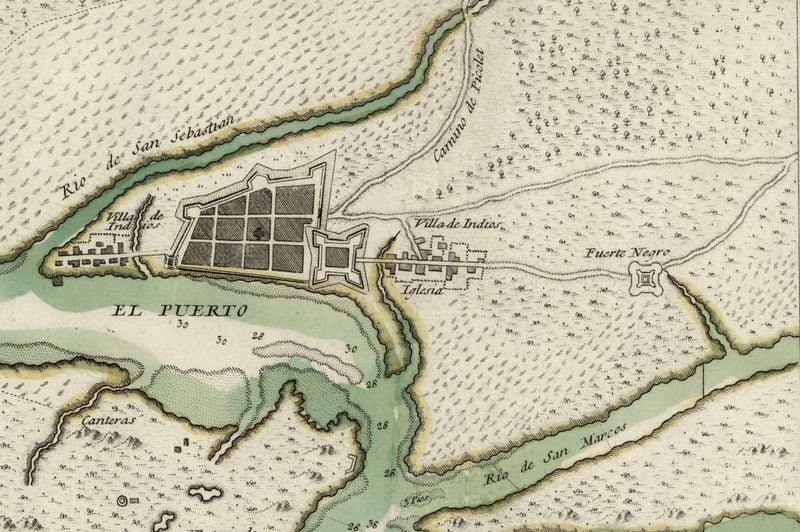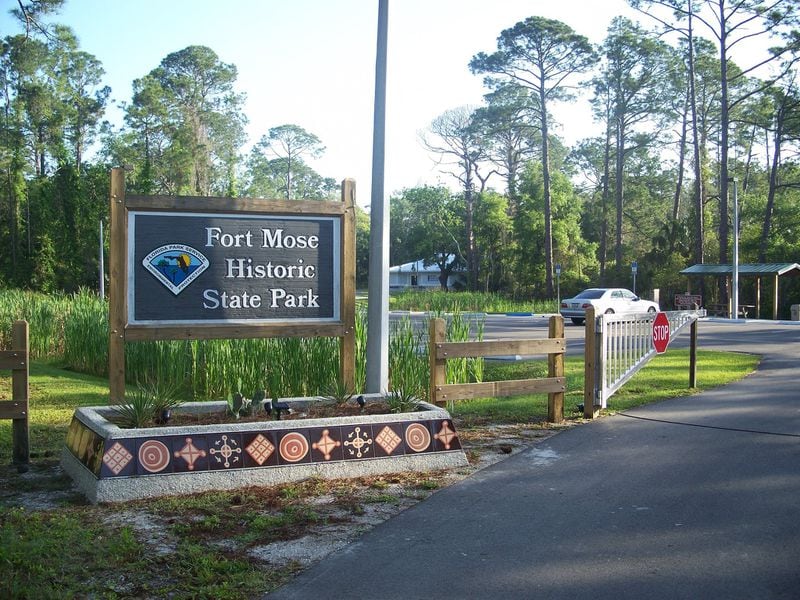The promise rang through the young British colonies: Any enslaved black person who could reach Florida, then under Spanish control, would be declared free if they immediately converted to Catholicism and declared themselves loyal to Spain.
That decree, issued by Spain’s King Charles in 1693, changed the course of thousands of black lives and led to the founding for Fort Mose, the first free black town in what would become the United States. It was a proclamation that stoked fear and anger in white slave owners in the Southern colonies. It was also an edict that British colonial governments vowed to roll back through violence. But for thousands of black people who were enslaved, it was a promise that raised hopes for nearly 70 years and launched many an escape attempt.
Black people from the Carolinas and Georgia took the dangerous, treacherous journey to the St. Augustine fort by land and by sea. They came in pairs and in groups, a steady stream. Once there, they found the promise to be true. It wasn’t that the Spanish didn’t have a long history of enslaving people. It was that the Spanish practice of slavery allowed the enslaved to own property, keep their families intact and to have other legal freedoms and protections. But the Spanish offer of full freedom in the new world was strategic. It was meant to destabilize the British colonies to the north and to build an army that could defeat the British.
So many black people flooded St. Augustine that, in 1738, the Spanish governor of St. Augustine ordered a new fort be built by and for the new arrivals. It was strategically positioned a couple of miles north of the city. In that way, it became the first line of defense against British raids across the Georgia-Florida border. The new black city was officially named Gracia Real de Santa Teresa de Mose, or Fort Mose, run by, defended by and populated by free black people.
»MORE: ‘Lift Every Voice and Sing’: Whether anthem or hymn, song invokes pride
The fort was attacked by the British just two years after it was built. Though the Fort Mose militia and Spanish forces ultimately defeated the British, the fort was virtually destroyed. The black population moved back to St. Augustine for several years. A decade after the British attack, Fort Mose was rebuilt. Black families returned to a larger, improved fort defended on all sides by a moat of prickly, swordlike vegetation.
It wasn’t until the Spanish ceded Florida to the British that Fort Mose saw its end as the first black city in colonial America. But the residents of Mose were not handed over to the British. Instead they, with many Spaniards from St. Augustine, emigrated to Cuba.
Today, nothing remains of the fort, but the site is now a Florida state park and a National Historic Site, with an interactive museum that commemorates the nation’s first city where black people could govern themselves and live free.
Throughout February, we’ll spotlight a different African-American pioneer in the daily Living section Monday through Thursday and Saturday, and in the Metro section on Fridays and Sundays. Go to myAJC.com/black-history-month for more subscriber exclusives on people, places and organizations that have changed the world, and to see videos on the African-American pioneer featured here each day.









